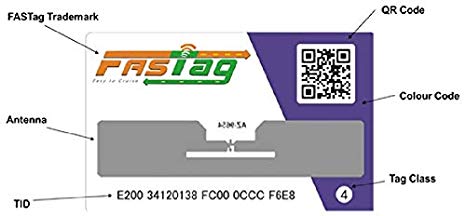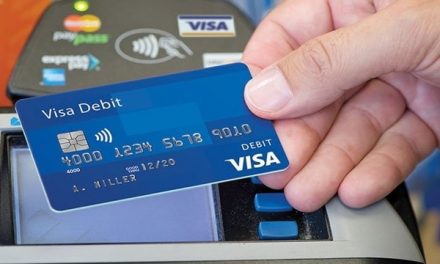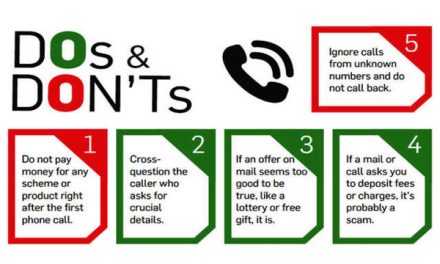FASTag is mandatory for all vehicles, private and commercial, from Jan 15, 2019. These are currently issued by 22 certified banks through various channels such as Point-of-Sale (POS) at National Highway toll plazas and bank branches.
Nitin Gadkari, the Road Transport and Highways Minister, has announced that FASTags is mandatory for all vehicles, private and commercial, from Jan 15, 2019 (the earlier deadline was December 1).
And according to the report, vehicles without FASTags will have to now pay up twice the normal rate at toll gates across the country.
Therefore, it is important that you get one fast if you don’t have it already; you just have a week left.

What are FASTags?
FASTags are prepaid rechargeable tags for toll collection that allow automatic payment deduction from the FASTag, they are normally affixed on the windscreen of your vehicle. With the help of a FASTag, you will not have to stop your vehicle at toll plazas to pay the toll. As soon as the vehicle crosses the toll plaza, the toll fee will get deducted from the bank account/prepaid wallet linked to the FASTag affixed on the vehicle’s windscreen. An activated FASTtag works on Radio Frequency Identification (RFID) technology. Moreover, these FASTags do not have any expiry date, that is, they can be used as long as they are readable at the toll plaza and do not tamper.
How to buy and activate your FASTag
FASTags are issued by 22 certified banks through various channels such as Point-of-Sale (POS) at National Highway toll plazas and select bank branches. They are also available on the e-commerce platform such as Amazon and Paytm.
GET A FREE AXIS BANK FASTAG
Here is how you can do it.
Self-Activation: FASTags are ‘bank-neutral’, that is, no bank is pre-assigned to the FASTag at the time you purchase it from a POS terminal or online platform. The online FASTag is based on the concept of DIY (Do-It-Yourself) where you can self-activate it by entering vehicle details in the ‘My FASTag’ mobile app. Android smartphone users can download the My FASTag app from ‘Google Play Store’ and iPhone users can download the app from ‘Apple Store’.
Thereafter, you have the flexibility to link the FASTag with any one of your existing bank accounts by using the My FASTag Mobile app. The NHAI (National Highways Authority of India) Prepaid wallet facility is also available in My FASTag mobile app, where you can load money and get your toll fee deducted from the prepaid wallet instead of getting it directly deducted from a bank account.
Activate by visiting certified bank branch: You can also buy FASTag by visiting the nearest certified bank branch and get the FASTag linked with your existing bank account.
A detailed list of certified banks providing FASTags:
| S. No. | Issuing Bank | Customer Care Helpline No |
| 1 | Axis Bank | 1800-419-8585 |
| 2 | ICICI Bank | 1800-2100-104 |
| 3 | IDFC Bank | 1800-266-9970 |
| 4 | State Bank of India | 1800-11-0018 |
| 5 | HDFC Bank | 1800-120-1243 |
| 6 | Karur Vysya Bank | 1800-102-1916 |
| 7 | EQUITAS Small Finance Bank | 1800-419-1996 |
| 8 | PayTM Payments Bank Ltd | 1800-102-6480 |
| 9 | Kotak Mahindra Bank | 1800-419-6606 |
| 10 | Syndicate Bank | 1800-425-0585 |
| 11 | Federal Bank | 1800-266-9520 |
| 12 | South Indian Bank | 1800-425-1809 |
| 13 | Punjab National Bank | 080-67295310 |
| 14 | Punjab & Maharashtra Co-op Bank | 1800-223-993 |
| 15 | Saraswat Bank | 1800-266-9545 |
| 16 | Fino Payments Bank | 1860-266-3466 |
| 17 | City Union Bank | 1800-2587200 |
| 18 | Bank of Baroda | 1800-1034568 |
| 19 | IndusInd Bank | 1860-5005004 |
| 20 | Yes Bank | 1800-1200 |
| 21 | Union Bank | 1800-222244 |
| 22 | Nagpur Nagarik Sahakari Bank Ltd | 1800-2667183 |
At the time of activation, you need to submit the KYC (Know Your Customer) documentation as per the KYC policy of the bank. Apart from the KYC documentation, you need to submit Registration Certificate (RC) of the vehicle along with the application for FASTag to the bank.
What are the charges for FASTag:
FASTag issued by certified banks can charge a maximum of Rs 100 for each tag, which is fixed by National Payments Corporation of India (NPCI). However, the actual tag issuing charges are defined by the bank and may vary from bank to bank.
The top-up charges may vary from bank to bank and this difference can be seen on respective banks‘ website.
How to recharge your FASTag:
If the FASTag is already linked with your bank account, then there is no need to load money separately in a prepaid wallet. You only need to ensure that your FASTag-linked bank account has sufficient balance to allow for toll payments. However, if you have linked to a prepaid wallet (NHAI prepaid wallet), then it can be recharged through various channels such as payment through cheque or through UPI/debit card/ credit card/ NEFT/ Net Banking. Also, additional charges will be levied while recharging the FASTag account through different channels.
Moreover, there is a cap on the maximum balance which can be kept in the prepaid wallet. As per regulations, these limits are:
For limited KYC account holder: This type of FASTag cannot have more than Rs 20,000 in their FASTag prepaid wallet. The monthly reload limit is also capped at Rs 20,000.
For full KYC account holder: This type of FASTag account cannot have more than Rs 1 lakh in their FASTag prepaid wallet. There is no monthly reload cap in this account, according to the Indian Highways Management Company Limited (IHMCL) website.
Points To Note:
You cannot use one FASTag with two or more vehicles, you will have to buy two separate FASTags for the two vehicles and so on.
As per the IHMCL website, “If you reside within a range of 10 km from the toll plaza, you can avail a concession on toll to be paid . In such a case, you need to submit the required documents – proof of residence at the bank, nearest POS location to validate that your residential address is within 10 km of a particular toll plaza. Once the address is verified, you can avail a concession on the toll paid via FASTag assigned to your vehicle.











